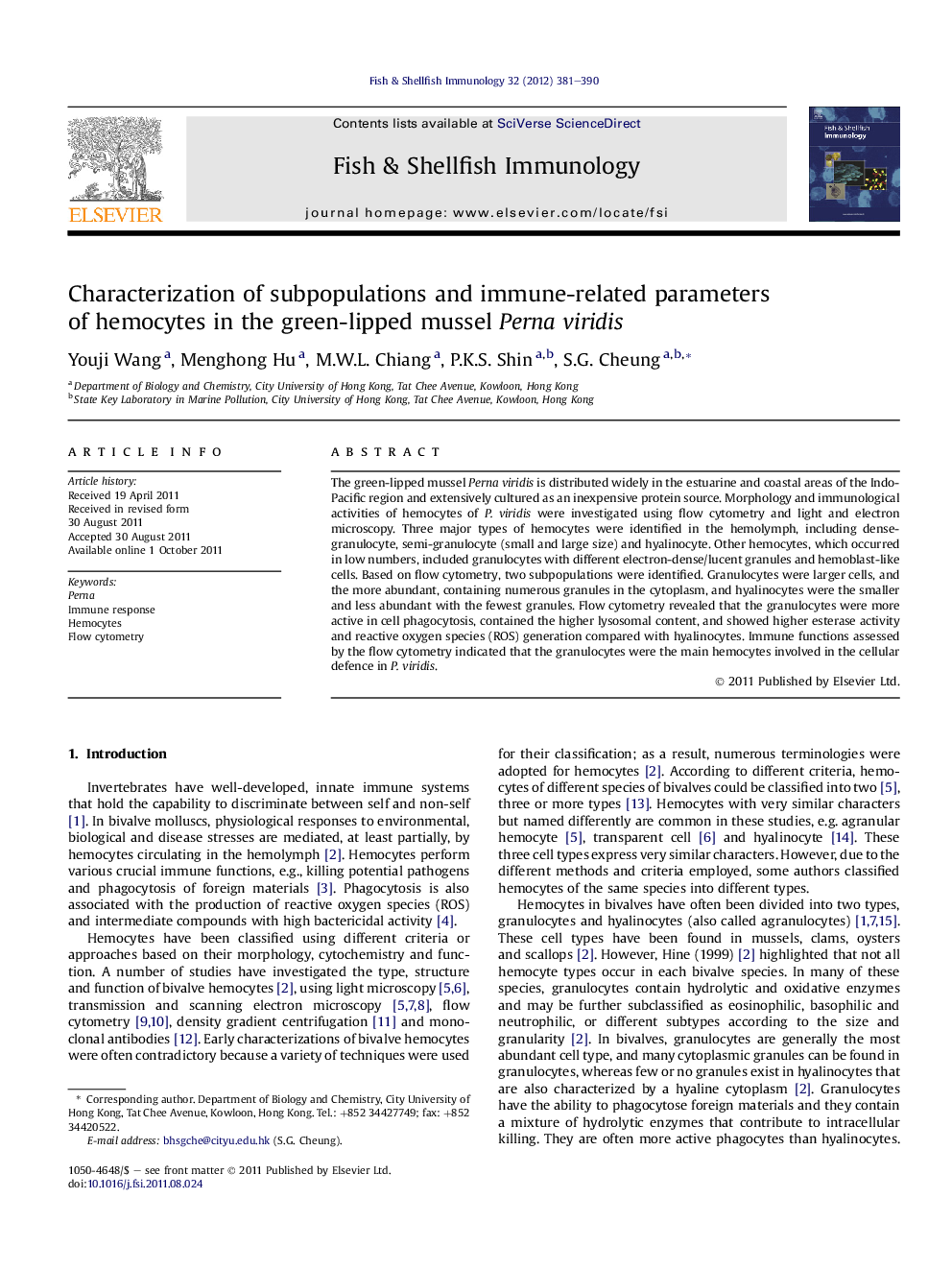| Article ID | Journal | Published Year | Pages | File Type |
|---|---|---|---|---|
| 2432303 | Fish & Shellfish Immunology | 2012 | 10 Pages |
The green-lipped mussel Perna viridis is distributed widely in the estuarine and coastal areas of the Indo-Pacific region and extensively cultured as an inexpensive protein source. Morphology and immunological activities of hemocytes of P. viridis were investigated using flow cytometry and light and electron microscopy. Three major types of hemocytes were identified in the hemolymph, including dense-granulocyte, semi-granulocyte (small and large size) and hyalinocyte. Other hemocytes, which occurred in low numbers, included granulocytes with different electron-dense/lucent granules and hemoblast-like cells. Based on flow cytometry, two subpopulations were identified. Granulocytes were larger cells, and the more abundant, containing numerous granules in the cytoplasm, and hyalinocytes were the smaller and less abundant with the fewest granules. Flow cytometry revealed that the granulocytes were more active in cell phagocytosis, contained the higher lysosomal content, and showed higher esterase activity and reactive oxygen species (ROS) generation compared with hyalinocytes. Immune functions assessed by the flow cytometry indicated that the granulocytes were the main hemocytes involved in the cellular defence in P. viridis.
